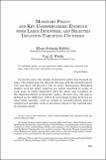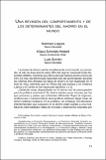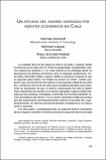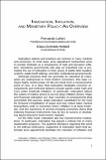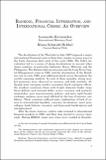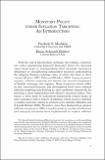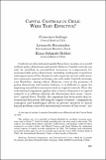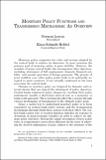Search
Now showing items 11-18 of 18
Monetary policy and key unobservables: evidence from large industrial and selected inflation-targeting countries
In recent years, the design of monetary policy has focused on gaps—the output gap, the interest rate gap, and the unemployment rate gap have all played a role in policy discussions. Standard models used for policy analysis are either specified in terms of such gaps or imply important roles for these ...
Una revisión del comportamiento y de los determinantes del ahorro en el mundo
Las tasas de ahorro varían ampliamente en el mundo: en promedio, el este de Asia ahorra sobre 30% del ingreso nacional bruto disponible (INBD), mientras que África del sub-Sahara ahorra menos de 15%. Es más, las diferencias regionales han ido aumentando: durante las últimas tres décadas las tasas de ...
Un estudio del ahorro agregado por agentes económicos en Chile
La notable alza de las tasas de ahorro privado y público desde comienzos de los años 80 en Chile ha despertado considerable interés. Este interés se ha reflejado tanto en discusiones de política económica como en trabajos académicos. Entre ellos, Morandé (1998) y Agosín (1999) se proponen explicar lo ...
Indexation, inflation, and monetary policy: an overview
Indexation policies and practices are common in many markets and economies. In most cases, price adjustment mechanisms arise in private contracts as a consequence of high and pervasive inflation. Sometimes governments also play an important role in promoting the use of indexation in their issues of ...
Banking, financial integration, and international crises: an overview
The devaluation of the Thau bath in July 1997 triggered a major international financial crisis in East Asia, similar in many ways to the Latin American debt crisis of the early 1980s. The baht´s devaluation led to a Seriesos sharp devaluations in several other Asian countries, in particular Indonesia, ...
Monetary policy under inflation targeting: an introduction
With the end of intermediate exchange rate regimes, countries are either abandoning domestic monetary policy (by choosing super-hard pegs or relinquishing their national currencies altogether) or strengthening independent monetary policymaking (by adopting floating exchange rates, of either the clean ...
Capital controls in Chile: were they effective?
Controls on international capital flows have no place in a world without policy distortions and markt failures. Capital controls can only be justified as second-best measures to compensate for nonremovable policy distortions, including inadequate regulation and supervision of the financial and corporate ...
Monetary policy functions and transmission mechanisms: an overview
Monetary policy comprises the rules and actions adopted by the central bank to achieve its objectives. In most countries the primary goal of monetary policy is price stability. However, the mandate of many central banks also encompasses other objectives, including attainment of fullemployment, domestic ...

